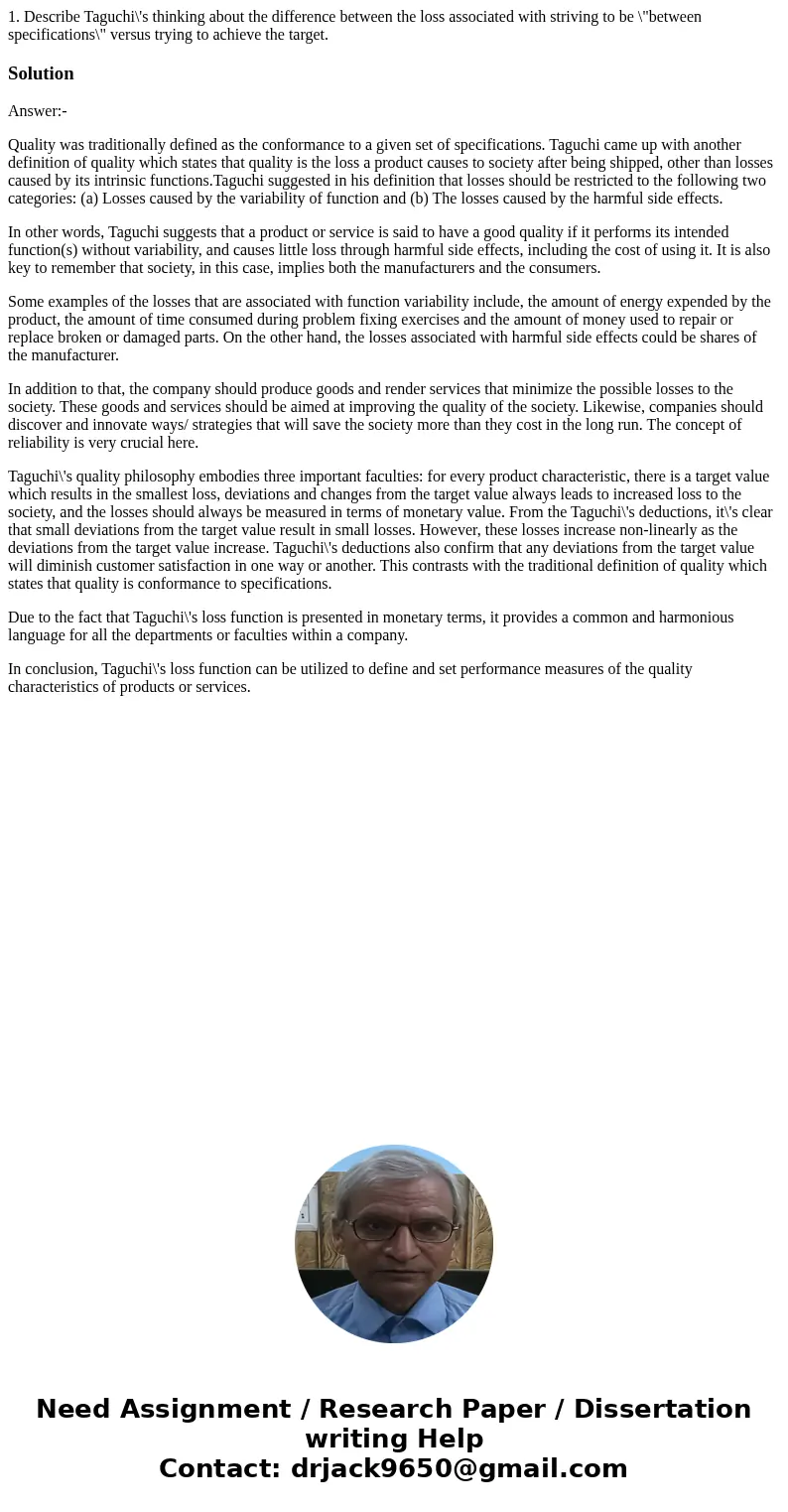1 Describe Taguchis thinking about the difference between th
1. Describe Taguchi\'s thinking about the difference between the loss associated with striving to be \"between specifications\" versus trying to achieve the target.
Solution
Answer:-
Quality was traditionally defined as the conformance to a given set of specifications. Taguchi came up with another definition of quality which states that quality is the loss a product causes to society after being shipped, other than losses caused by its intrinsic functions.Taguchi suggested in his definition that losses should be restricted to the following two categories: (a) Losses caused by the variability of function and (b) The losses caused by the harmful side effects.
In other words, Taguchi suggests that a product or service is said to have a good quality if it performs its intended function(s) without variability, and causes little loss through harmful side effects, including the cost of using it. It is also key to remember that society, in this case, implies both the manufacturers and the consumers.
Some examples of the losses that are associated with function variability include, the amount of energy expended by the product, the amount of time consumed during problem fixing exercises and the amount of money used to repair or replace broken or damaged parts. On the other hand, the losses associated with harmful side effects could be shares of the manufacturer.
In addition to that, the company should produce goods and render services that minimize the possible losses to the society. These goods and services should be aimed at improving the quality of the society. Likewise, companies should discover and innovate ways/ strategies that will save the society more than they cost in the long run. The concept of reliability is very crucial here.
Taguchi\'s quality philosophy embodies three important faculties: for every product characteristic, there is a target value which results in the smallest loss, deviations and changes from the target value always leads to increased loss to the society, and the losses should always be measured in terms of monetary value. From the Taguchi\'s deductions, it\'s clear that small deviations from the target value result in small losses. However, these losses increase non-linearly as the deviations from the target value increase. Taguchi\'s deductions also confirm that any deviations from the target value will diminish customer satisfaction in one way or another. This contrasts with the traditional definition of quality which states that quality is conformance to specifications.
Due to the fact that Taguchi\'s loss function is presented in monetary terms, it provides a common and harmonious language for all the departments or faculties within a company.
In conclusion, Taguchi\'s loss function can be utilized to define and set performance measures of the quality characteristics of products or services.

 Homework Sourse
Homework Sourse